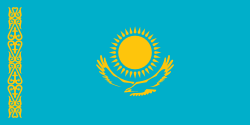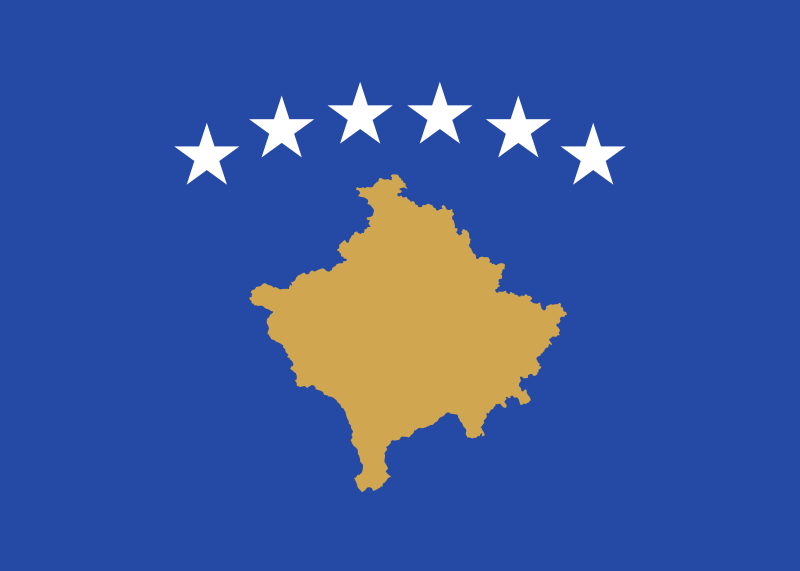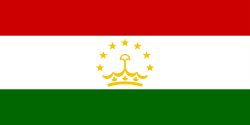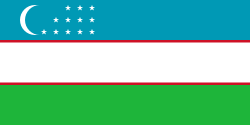General Information
Population
Immigration
Emigration
Working-age population
Unemployment rate
GDP
Refugees and IDPs
Citizenship
Territory
Migration Authorities
Responsible Body
Line Ministries
Department of Enterprise, Trade and Employment
Department of Children, Equality, Integration, Disability and Youth
Agencies
Office for the Promotion of Migrant Integration
The Office for Social Inclusion
International Protection Appeals Tribunal
International Protection Office
International Protection Accommodation Services
Irish Human Rights and Equality Commission
Garda National Immigration Bureau - Human Trafficking Investigation and Coordination Unit
Key Policy Documents
The Illegal Immigrants (Trafficking) Act 2000
The Employment Permits Acts (Law Reform Commission, consolidated) 31 December 2020
Employment Permits Acts 2003–2014
Employment Permits Regulations 2017
International Protection Act 2015 (as amended) (replaces the Refugee Act 1996 (as amended))
European Communities (Subsidiary Protection) Regulations 2013 (as amended)
Irish Nationality and Citizenship Act 1956, as amended
Criminal Law (Human Trafficking) Act 2008 (amends the Child Trafficking and Pornography Act 1998)
Criminal Law (Sexual Offences) Act 2017
European Communities (Free Movement of Persons) (No. 2) Regulations 2006 (amended by the European Communities (Free Movement) (Amendment) Regulations 2008)
European Union (Withdrawal Agreement) (Citizens Rights) Regulations 2020
Description
For most of its history, Ireland was a country of emigration. Over the past two decades, however, the country has been transforming into a more heterogeneous society given higher immigration flows. According to the preliminary results of the census 2022, the population of Ireland has increased by 7.6% since the census 2016 reaching over 5.1 million people in April 2022. One-half of this growth is due to immigration and another one is attributed to the natural increase. Around 13% or 646.000 of the population are non-Irish nationals, including 180.000 who are neither UK nor EU nationals.
From 2010 until 2018, immigration flows to Ireland have been steadily growing, but then slightly declined to reach 65.200 persons in 2021. The main nationalities of immigrants in 2020 were Irish (39%), Brazilian (8%), Romanian (7%), Indian (7%) and the UK (5%). In the year ending April 2021, one year after Brexit, flows to and from the UK increased significantly as compared to the previous years, by 125% and 182% respectively. Over the same period, immigration of EU nationals declined two-fold reaching 14.100 in the year ending April 2021. The main reasons for immigration (12 months or more) were family reasons (28%), remunerated activities (24%), education reasons (14%), refugee status (2%) and subsidiary protection (1%), as well as other reasons (31%), according to permits issued in 2020.
In terms of international protection, Ireland has not been a major destination but the situation is rapidly changing against the war in Ukraine. The number of asylum applications increased continuously from 2.926 in 2017 to 4.781 in 2019. However, it decreased significantly thereafter due to the COVID-19 pandemic. In the first three months of 2022, Ireland has already received 2.182 asylum applications, which is nearly as many as in the whole year 2021. In 2022 (Jan-Mar), the main countries of origin were Somalia (20.4%), Georgia (10.1%), Algeria (9.3%), Nigeria (8.5%), Ukraine (7.6%) and others (44.2%). In 2021 and 2020, Nigeria was the main country of origin for asylum seekers, replacing Albania as the top origin country in 2019 and 2018 and Syria in 2017 and 2016. By 10 July 2022, 43.256 persons from Ukraine received temporary protection in Ireland.
The number of undocumented persons in Ireland ranges from 17.000–20.000, according to 2020 estimates by the Migrant Rights Centre Ireland. According to NGO reports, the majority entered legally and overstayed their visas. The number of non-EU nationals found to be illegally present in Ireland has not exceeded 2.800 cases per year since 2012 with lows in 2014, 2015, 2020 and 2021, when the figure had not reached 1.000 cases per year. The trend correlates with the number of non-EU nationals ordered to leave. Since 2012, it ranged between 1.000 and 2.500 persons, except for 2014, 2015, 2020 and 2021 with the figures falling to 970, 875, 795 and 160 persons respectively. The number of returns was between 300 and 550 in the period 2015-2020 and fell to 165 in 2021. The decrease in 2020 and 2021 might have been inflicted by the restrictions introduced in response to the COVID-19 pandemic.
To reduce the number of persons illegally present in Ireland, the country debated regularisation and introduced a first regularisation scheme targeting former students in 2018. More recently, a regularisation scheme for long-term undocumented migrants was open for applications from 31 January 2022 until 31 July 2022.
Trafficking in human beings remains an issue in Ireland, but the country constantly undertakes efforts to eliminate it. In 2021, 44 new trafficking cases have been reported (25 for sex trafficking and 19 for labour trafficking), compared to 38 cases in 2020 and 41 in 2019. Investigations of 20 trafficking cases that have been initiated in previous years (13 for sex trafficking and seven for labour trafficking, including one case for forced criminality) continued in 2021. In the same year, prosecution of one sex trafficking suspect was initiated, constituting a slight decrease as compared to three in 2020 and five in 2019. In 2021, two sex traffickers were convicted, constituting the first conviction since 2013, despite the identification of 500 trafficking victims during the same period, leading to concerns about inadequate criminal justice response. The Criminal Justice (Sexual Offences) Act of 2017 criminalized the purchase of sexual services and prescribed more severe penalties for the purchase of sex from a victim of trafficking. In 2020, the Irish Human Rights and Equality Commission was designated as Ireland’s independent national rapporteur on trafficking in human beings.
Sectors particularly prone to exploitation and labour trafficking include the fishing industry and the meat sector. In 2015, an inter-departmental government task force investigated allegations of exploitation and potential human trafficking in the Irish fishing industry and put forward recommendations that resulted in an expansion of the Atypical Working Scheme for seafarers. In 2014, the Reactivation Employment Permit was introduced to regularise the situation of workers who no longer hold a valid employment permit due to exploitation in the workplace (e.g. in the meat sector), or other reasons that were not their fault.
In the year ending April 2021, 54.000 persons emigrated from Ireland, as compared to 56.500 in the year ending April 2020. Emigrants (Jan-Jun 2020, total = 38,500) were mainly Irish nationals (58%), followed by Polish nationals (5%) as well as nationals of Romania, the UK and Brazil, at 4% respectively.
The latest considerable wave of emigration from Ireland has been observed between 2009 and 2015 following the economic crisis of 2008. The economic recession led to the growth in unemployment and underemployment, creating an impetus for people to leave. Throughout this period, the net migration of Irish citizens was negative, as almost 265.000 Irish nationals left the country and only 120.000 returned. The majority of Irish emigrants left for the UK, Australia, the US, New Zealand and Canada, most of which already hosted sizeable Irish communities. In response to intensified emigration, Ireland appointed its first Minister for Diaspora Affairs in 2014 and put in place a range of policy responses centred around diaspora engagement (including support to vulnerable emigrants), return policies and voting and diaspora rights. A Diaspora Policy was launched in 2015, and the Global Irish website was put in place. The emigration trend has been reversing in recent years, with the number of Irish returnees exceeding the number of those emigrating. For example, in the year ending April 2021, 22.800 Irish nationals left the country and 30.200 returned to Ireland.
In January 2020, several changes concerning economic migration came into effect. This includes updates to the Ineligible Occupations List and to the Critical Skills Occupations List, adding several professions to the latter to address skill and labour shortages in the health sector given the crucial role of foreign healthcare professionals in the Irish healthcare system (for example, physicians from Pakistan, India and Sudan, nurses from India and the Philippines). Furthermore, the remuneration thresholds to Critical Skills Employment Permits have been increased. UK citizens continue to be included in the Ireland/EEA employee count in a rule that requires employers to ensure that at least 50% of their workforce are from Ireland/EEA or the Swiss Confederation.
Ireland endorsed the Global Compact for Migration in 2018. It is actively cooperating with international organizations, such as UNHCR, IOM and ICMPD, and is involved in a range of migration dialogues, such as the Prague Process or the Budapest Process. In December 2020, Irish Aid and IOM launched the Global Migration Media Academy to provide migration-related training to media professionals and students of journalism worldwide. In June 2020, the newly formed Irish Government stated the goals to address issues related to undocumented migrants, the international protection process and reform of the Direct Provision system, integration, anti-racism policy, migrant smuggling and trafficking.
In July 2022, Government announced €1,000,000 for the International Protection Integration Fund, building on a 2021 White Paper to end direct provision and establish a new international protection support service. It sets out the Government’s approach to end Direct Provision and replace it with ‘a new International Protection accommodation policy centred on a not-for-profit approach.’ The new model proposes a two-phase approach: In Phase One, the applicant will be accommodated in a Reception and Integration Centre for four months, with a focus on identifying needs, defining pathways, and linking applicants to appropriate services. In Phase Two, the emphasis is on fostering an independent life within the community.



















































